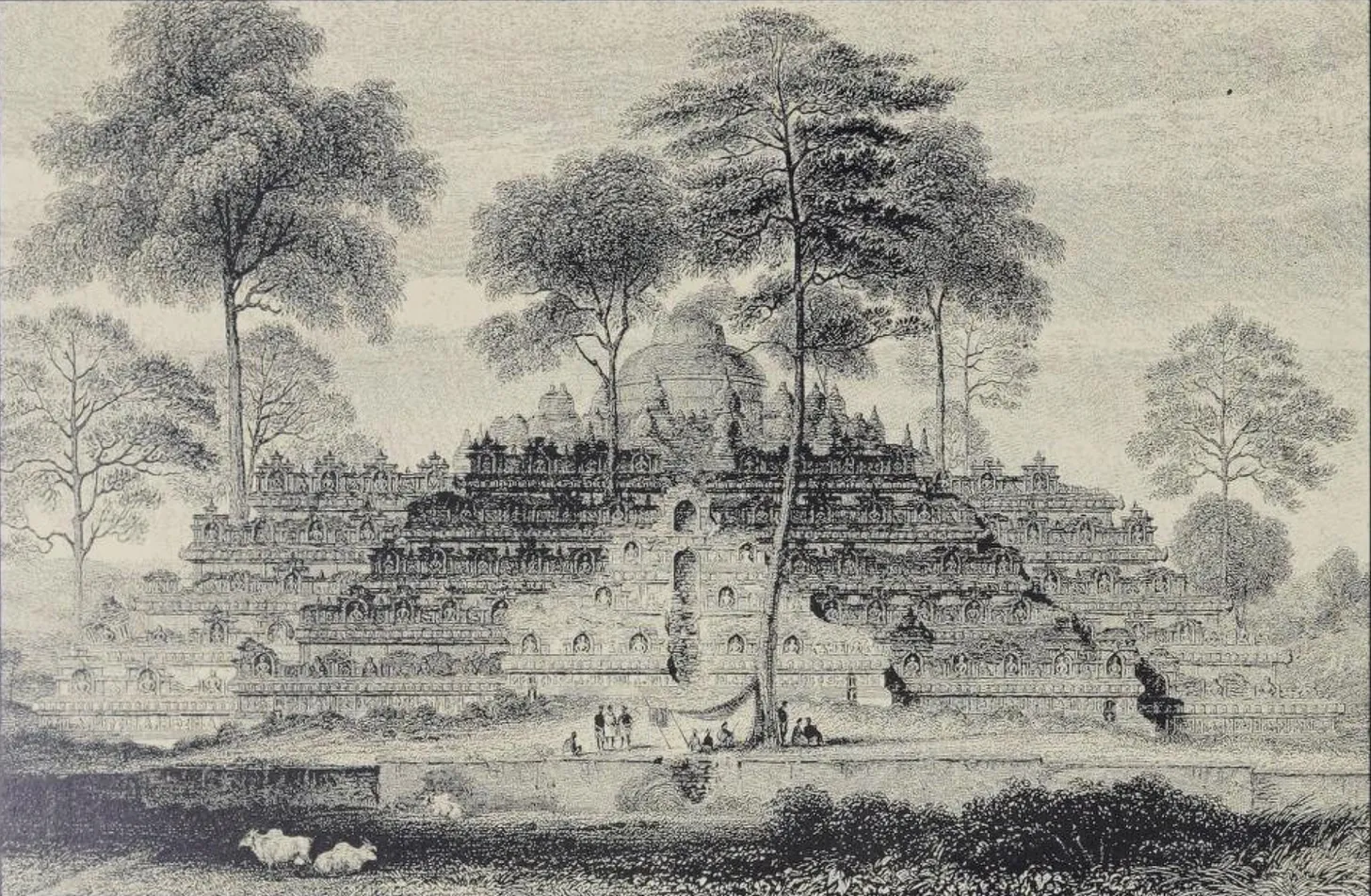Borobudur

M.E. Rothwell’s Cosmographia is a frequent delight, and his latest missive really hits my sweet spot: an unknown history, a huge structure, and a bit of a mystery. I encourage you to go and read the whole thing, or at least just look at the wonderful illustrations.
Borobudur is the largest and most elaborate Buddhist temple in the entire world. Yet its origins remain a mystery.
The temple lies in central Java, Indonesia, surrounded by thick jungle and a ring of mountains. It’s suspected its construction, amid an area with no traces of any other ancient buildings, palaces, or cities, may have been begun by the Shailendra and/or Sanjaya dynasties of 8th century Java. It’s estimated one million stones, each weighing 100kg each, were mined from a nearby riverbed in order to build the stupa, which contains 504 statues of the Buddha and almost 3000 carved stone reliefs.
No one quite knows why such a vast Buddhist edifice was built in a primarily Hindu area, some 5000km away from the centre of Buddhist thought. It’s not even known what precise function it served. The sophisticated civilisation that birthed it went into a sudden and mysterious decline within a century of the temple’s completion in the mid-9th century.
[…]
[T]he temple was ‘rediscovered’ by the man with the most British name of all time — Sir Thomas Stamford Bingley Raffles. As Governor General of the Dutch East Indies between 1811 and 1816, Raffles took great interest in the history of the island. After he heard about the existence of a huge monument deep in the jungle, he dispatched Dutch engineer Hermann Cornelius to investigate. It took his team two months to cut back the undergrowth to reveal the extent of the huge temple complex.
Source: Cosmographia